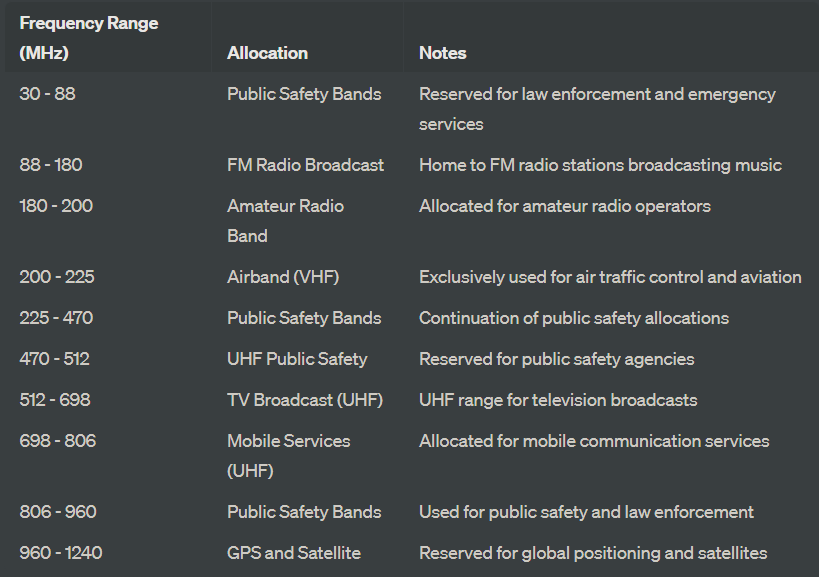Frequency Space
The San Andreas Communications Commission (SACC) plays a pivotal role in overseeing and managing the intricate web of frequency space within the region. This oversight extends across radio, television, internet, and wireless services, making the SACC a central authority in ensuring the orderly and efficient use of public airwaves. In this article, we delve into the agency's responsibilities, challenges, and its impact on the frequency space landscape in San Andreas.
One of the primary functions of the SACC is the allocation and management of frequency space. This entails assigning specific frequency bands to various communication services and users, preventing interference and congestion. The agency's meticulous planning and allocation help ensure that radio stations, television broadcasts, wireless networks, and emergency services can coexist harmoniously.
Frequency Chart - Up to Date
-
VHF Bands (30 - 200 MHz): VHF bands are primarily utilized for various purposes, including public safety communications, FM radio broadcasts, aviation (airband), and amateur radio operations.
-
UHF Bands (225 - 806 MHz): The UHF spectrum encompasses television broadcasts, public safety communications, mobile services, and more. It is vital for law enforcement, emergency response, and mobile communication networks.Mobile Services (698 - 806 MHz): The mobile services band in the UHF range is essential for mobile communication networks, including cellular services. It facilitates voice and data transmission, connecting residents and businesses across San Andreas.
-
GPS and Satellite (960 - 1240 MHz): This range is allocated for global positioning systems (GPS) and satellite communication. It is integral for navigation, weather forecasting, and a wide array of satellite-based services.
Known Frequencies
-
FM Stations
- WEAZEL RADIO - 161.250 FM
Amateur Radio Band (180 - 200 MHz):
The amateur radio band, allocated from 180 to 200 MHz, provides licensed amateur radio operators with a dedicated space for experimentation and communication. It fosters a community of radio enthusiasts who engage in activities such as emergency communication, contests, and technical experimentation.

